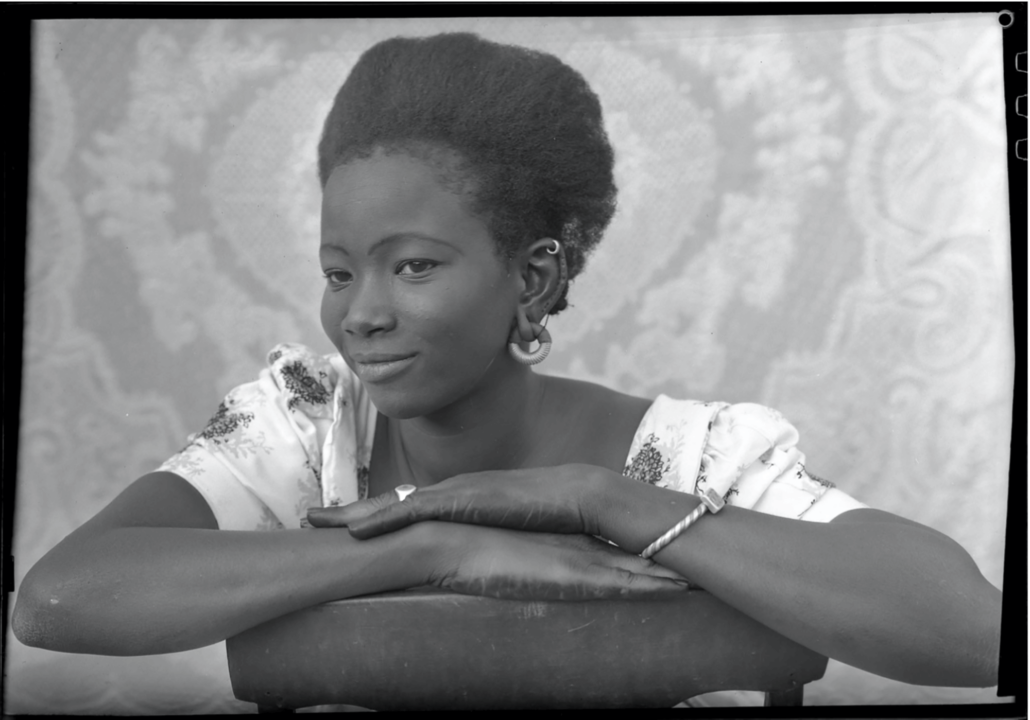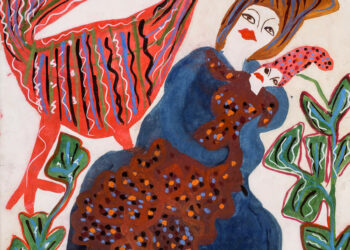Seydou Keïta (c. 1921-2001) is considered to be one of West Africa’s most influential photographers.

Seydou Keïta, Sans titre / Untitled (00260), 1948-1954. Posthumous silver print, 55 x 65,5 x 3,4cm. Courtesy of Galerie Nathalie Obadia.
This exhibition brings together an exhaustive selection of works of this self-taught artist, whose rise to fame started off in a small studio in Bamako (Mali), which at the time was the capital of former French Sudan. The inventiveness of the mise en scene, the modernity of the photographs and the fresh approach to the subjects photographed, made Keïta a celebrity in his own country: thousands of Malians and travelers from West Africa came to have their photographs taken by Seydou Keïta between 1948 and 1962. Keïta retired in 1977 after having been the official photographer of Mali, which became independent in 1960. These photographs are an important record of Malian society’s evolution at the end of the colonial period. In other times, the subjects would have considered as anthropological exhibits, but here they have regained their identities, taking their rightful place at the heart of each work. These photographs have become archival documents and exceptional documentary sources concerning a period that marked a turning point in West African history.
In the 1950s, one could often hear in Bamako “anyone who has not been photographed by Seydou Keïta, has never had a photo taken”. Yet, outside Sub-Saharan Africa, his work was little known in the West until 1991. It was that year, in New York on the occasion of the exhibition ‘Africa Explores: Twentieth Century African Art‘, that André Magnin and the great collector of African art Jean Pigozzi discovered uncredited photographs of striking beauty. On behalf of the collector, André Magnin set out for Bamako where he finally met Seydou Keïta. He returned with several negatives of photographs shot by the artist, which immortalised a wide range of social classes from the population of Bamako. For the first time outside their country of origin, around forty of these photographs were exhibited at the Cartier Foundation in 1994. This personal exhibition was a huge success: more than 2000 visitors came on the opening day, celebrating a body of work that would soon gain international recognition.
No-one could have predicted that Seydou Keïta would become a photographer: as a child, he had started working with his father as a carpenter. His interest in photography began by chance in his teens, when his uncle gave him a Kodak Brownie with a flash. With no formal tuition, he started practicing by taking photographs of his family and friends and then passers-by in the street, experimenting fervently with the effects of natural light on his compositions. He then began to specialise in commissioned portraits and opened his own studio in 1948. He rapidly gained both fame and new clients. Alone or in groups, with friends or family, they began to queue up outside his studio, enchanted by the postcard-sized, stamped images they could send to their loved ones. Seydou Keïta was capable of producing up to 40 portraits a day, proudly exclaiming: “the whole Bamako has been to my studio to be photographed: civil servants, shopkeepers, politicians…” His studio was the place to go to be photographed, sometimes in celebration of a major event in the lives of his subjects, who were often posing in front of the lens for the very first time.
But what were people really seeking when they had themselves photographed by Seydou Keïta? Why were they so eager? Why did long queues form daily behind the central prison in Bamako-Coura (“New Bamako”) district? It is enough to simply look at his photographs to appreciate effect of natural light falling on the clasped or relaxed hands of his subjects; to let one’s eye explore the chiaroscuro on these oblique faces, whose gaze matches our own or turns away slightly with great elegance. In his quest for beauty or even perfection, Seydou Keïta seeks the most advantageous posture, and every detail had its own importance. His clients could choose from numerous accessories such as Vespa scooters, bicycles, transistor radios, jewellery and African or European clothing, all of which proliferated in his studio as a testament to the artist’s economic success. Many of the men chose to pose in European clothing, like the four clients lined up with their hands casually in their pockets or the small boy with a beret, leaning against a bicycle. Many earlier photographs lined the walls of his studio to inspire the poses of future clients. These different attitudes combined with the various accessories were a way of achieving a certain economic or social status or of granting oneself privileges previously reserved for whites. In a nutshell, everything was arranged to match the image that each subject wished to convey.
The sophisticated aesthetic of his photographs is due in part to the fabrics he used for his backgrounds. At first, between 1948 and 1954, he used his own fringed bedspread as a backdrop, before acquiring more fashionable, often wax, fabrics which he changed on a regular basis. Chosen from cloth on sale in Bamako, the fabrics stretched across the adobe walls of his studio underlined the vitality of his work. Women adorned with jewellery and dressed in traditional Malian clothing came to his studio to be immortalised. Each person posed elegantly in front of the patterned backgrounds that were a perfect match for their outfits, in an interweaving of floral compositions and abstract motifs that draws in the viewer’s ever-roaming eye. Natural light and a particular focus on the subject’s pose, as well as the patterned backgrounds, were all elements that made Seydou Keïta’s photographs unique and instantly recognisable.
Although photography was long used as a tool of colonial expansion in the Sub-Saharan region – it served amongst other things to record the subjects of French colonial power and to reinforce a stereotypical vision of Malians – Seydou Keïta’s African clients became an active part of his artistic approach, taking control over their own image, of their very identity. These unpublished works by Seydou Keïta thus take the form of archival images: they represent an exceptional testimony to the emancipation of Malian society, by affirming its modernity.
The exhibition will be on view from the 5th of May until the 15th of July, 2023. For more information, please visit Galerie Nathalie Obadia.



